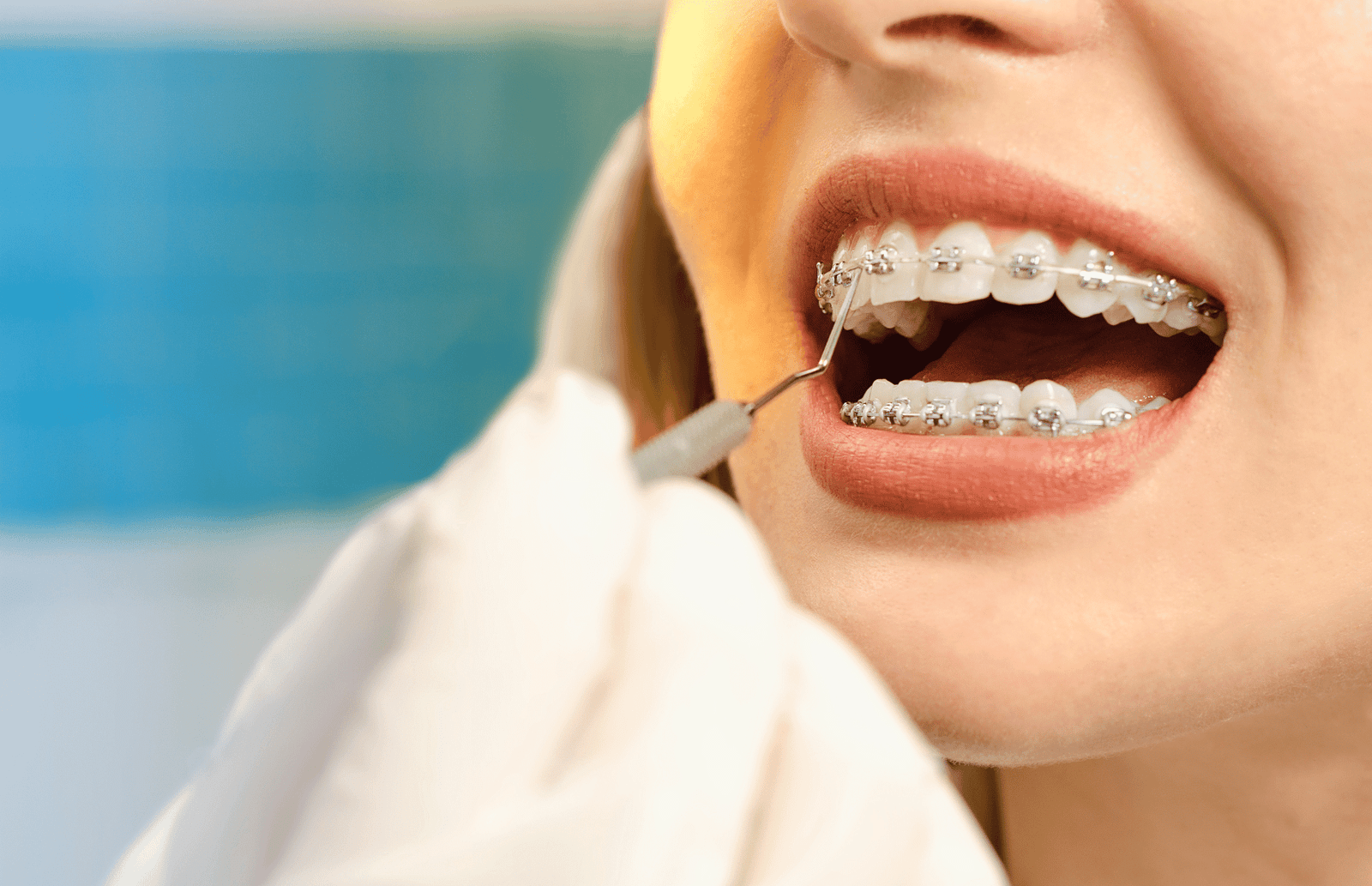How long do braces stay on?
Starting orthodontic treatment with braces is a major decision that often comes with numerous questions about the duration and overall process. The length of time braces need to stay on typically ranges from 18 months to 3 years, depending on various factors such as the severity of the dental issues being corrected, the type of braces used, the patient’s age, and how well the patient follows the orthodontist’s instructions. Each patient’s treatment plan is unique, influenced by the complexity of their case; for instance, more severe misalignments or bite issues may require longer treatment times. Additionally, advancements in orthodontic technology, such as clear aligners or self-ligating braces, can also affect the duration. Regular follow-up appointments are crucial, as adjustments made by the orthodontist ensure that the teeth are moving as planned. Patient cooperation, including maintaining good oral hygiene and avoiding foods that can damage the braces, is essential for staying on track with the treatment timeline. Ultimately, while the prospect of wearing braces might seem daunting, understanding the factors that affect treatment duration can help in preparing for and successfully navigating this transformative journey toward a healthier, more aligned smile.

Duration of Braces Treatment:
Braces treatment is a personalized journey, and the duration can vary significantly depending on several factors. On average, braces typically stay on teeth for about 18 to 36 months. However, this timeframe is subject to variation based on individual circumstances.
Factors Influencing the Duration of Braces Treatment:
Several factors influence how long braces stay on teeth:
Severity of Misalignment: The complexity of the case plays a crucial role. Mild misalignments may require shorter treatment durations, while more severe cases may necessitate longer treatment times.
Type of Treatment: The type of braces used can impact treatment duration. Traditional metal braces may require a longer treatment period compared to newer alternatives, such as clear aligners.
Patient Compliance: Adhering to the orthodontist’s recommendations is vital for successful treatment outcomes. Failure to follow instructions, such as wearing rubber bands or attending scheduled appointments, can prolong treatment.
Age and Growth: Younger patients, whose jaws are still growing, may experience faster treatment times compared to adults whose bone growth has stabilized.
Importance of Following the Orthodontist's Recommendations for Timely Removal:
Timely removal of braces is essential for several reasons:
Prevention of Relapse: Failing to complete the treatment as recommended by the orthodontist can result in relapse, where the teeth gradually shift back to their original positions.
Optimal Results: Following the orthodontist’s instructions ensures that the treatment progresses as planned, leading to the best possible outcome in terms of alignment and aesthetics.
Minimization of Treatment Duration: Adhering to the treatment plan reduces the likelihood of complications and the need for additional procedures, ultimately shortening the overall treatment duration.
Tooth Braces and Tooth Alignment:
Role of Braces in Aligning Teeth:
Braces work by applying continuous pressure to the teeth, gradually moving them into their desired positions. This process allows for precise control over tooth alignment, resulting in a straighter and more aesthetically pleasing smile.
Impact of Braces on Individual Teeth:
Each tooth responds differently to the forces exerted by braces. Some teeth may move more quickly or require additional adjustments to achieve optimal alignment. Orthodontists carefully monitor the progress of each tooth throughout the treatment process.
Adjustments Needed for Specific Tooth Misalignments:
Not all teeth move at the same rate or in the same direction. Orthodontists use various techniques, such as different types of brackets and wires, to address specific misalignments effectively. Adjustments are made as needed to ensure that each tooth moves into its ideal position.
Tooth Extraction for Braces:
When Tooth Extraction is Necessary for Braces:
In cases of severe crowding or impaction, orthodontists may recommend tooth extraction to create space for proper alignment. This step is carefully considered and planned based on the individual’s dental anatomy and treatment goals.
Procedure and Considerations for Tooth Extraction:
A dentist or oral surgeon typically performs tooth extraction under local anaesthesia. The procedure involves removing one or more teeth to alleviate crowding and facilitate orthodontic treatment. Orthodontists work closely with dental professionals to coordinate the timing of extractions with braces treatment.
Implications of Tooth Extraction on Braces Treatment Duration:
While tooth extraction may prolong the overall treatment duration, it is often necessary to achieve optimal alignment and bite function. Orthodontists take into account the potential impact of extractions on treatment progress and make adjustments to the treatment plan accordingly.
Progress with Impacted Canine Tooth Braces:
Challenges of Impacted Canine Teeth in Braces Treatment:
Impacted canine teeth, where the tooth fails to erupt properly, present unique challenges in braces treatment. These teeth may require special attention and techniques to guide them into their correct positions.
Strategies for Addressing Impacted Canines with Braces:
Orthodontists employ various strategies, such as braces chains and elastics, to gradually move impacted canines into alignment. Close monitoring of progress allows for timely adjustments to ensure successful treatment outcomes.
Monitoring Progress and Adjustments Needed:
Regular check-ups with the orthodontist are essential to monitor the progress of impacted canine teeth and make necessary adjustments to the treatment plan. Orthodontists work closely with patients to address any concerns and ensure that treatment progresses smoothly.
Maintenance and Care with Braces:
Oral Hygiene Practices with Braces:
Maintaining good oral hygiene is crucial during braces treatment to prevent tooth decay and gum disease. Patients should brush their teeth thoroughly after every meal and floss daily, paying extra attention to areas around brackets and wires.
Choosing the Right Toothbrush for Braces:
Using a toothbrush specifically designed for braces can make oral hygiene routines more effective. Orthodontic toothbrushes have special features such as V-shaped bristles and angled necks to reach areas around brackets and wires more easily.
Managing Discomfort and Preventing Complications:
Braces can cause temporary discomfort and soreness, especially after adjustments. Over-the-counter pain relievers and orthodontic wax can help alleviate discomfort. Patients should also avoid hard or sticky foods that can damage braces and increase the risk of complications.
Adjustments and Corrections:
Utilizing Braces Chains to Pull Teeth Down:
Brace chains are elastic chains that connect brackets to exert additional force on specific teeth, such as those that need to be pulled down into alignment. Orthodontists use brace chains strategically to achieve desired tooth movements and optimize treatment outcomes.
Orthodontic Techniques for Specific Tooth Movements:
Orthodontists employ a variety of techniques, including power chains, springs, and interarch elastics, to achieve specific tooth movements during braces treatment. These techniques allow for precise control over tooth position and alignment.
Timeline for Adjustments and Corrections During Braces Treatment:
The timeline for adjustments and corrections during braces treatment varies depending on the individual’s treatment plan and progress. Orthodontists schedule regular appointments to assess progress, make necessary adjustments, and ensure that treatment stays on track.
In conclusion, the journey of braces treatment involves various factors that influence the duration, progress, and outcomes. By understanding these aspects and actively participating in care and maintenance, individuals can navigate their braces journey with confidence, knowing that each step brings them closer to a beautiful and healthy smile. For personalized and expert orthodontic care, consider consulting with Gorgeous Smiles Dental located in Worcester, MA. Their experienced team is dedicated to helping you achieve the smile of your dreams.
Ready to book an appointment?
Book a consultation today or make an appointment using our convenient online appointment scheduler.

We’re committed to your safety.
Enjoy the flexibility of paying through monthly payments.

A discount plan available to keep you and your family healthy.
Others Article
At our dental practice, we prioritize compassion and empathy toward our patients. Please read our blog and articles for tips on maintaining oral health and learn more about our commitment to providing exceptional dental care with a personal touch.
